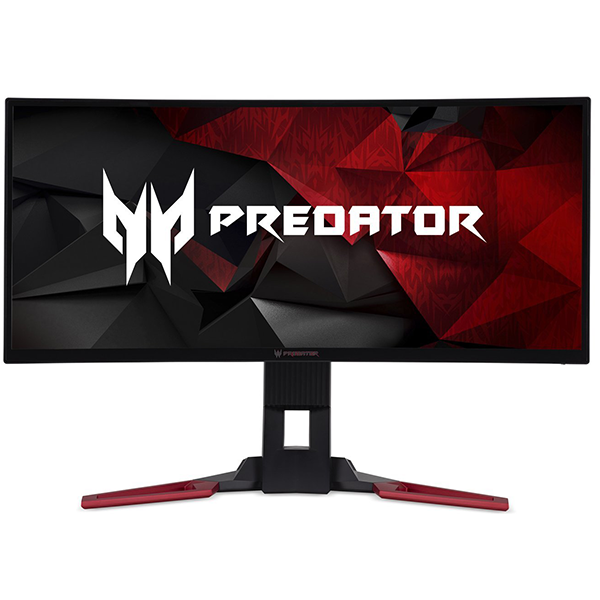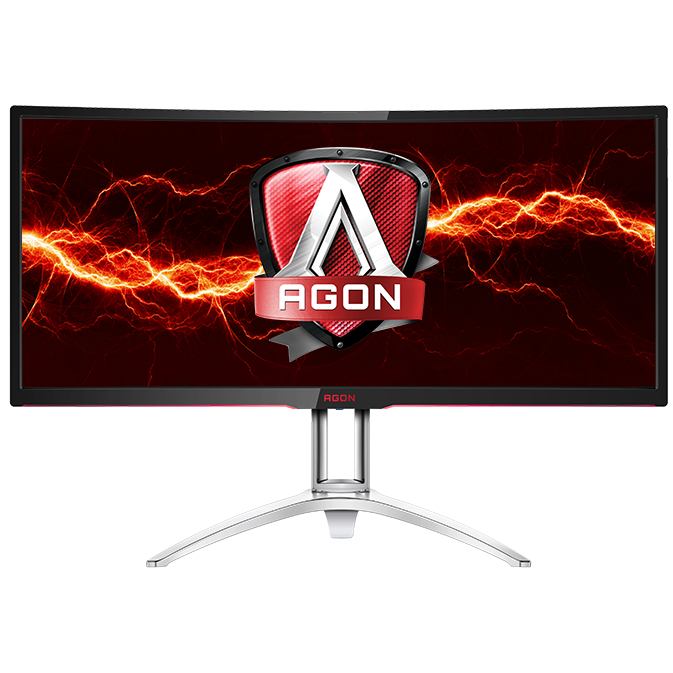Asus ROG Strix XG35VQ Monitor Review: A Prime, Curved Pick for FreeSync Gaming
Why you can trust Tom's Hardware
Brightness & Contrast
To read about our monitor tests in-depth, please check out Display Testing Explained: How We Test Monitors and TVs. Brightness and Contrast testing is covered on page two.
Uncalibrated – Maximum Backlight Level
VA monitors are still relatively rare in our review database, but we have a few curved displays in today’s comparison group. From Acer comes the Z301C, AOC brings the AG352UCG, and Asus is represented by its XG32VQ. To fill out the ultra-wide category, we included IPS screens: ViewSonic’s XG2703-GS and Acer’s XR382CQK.
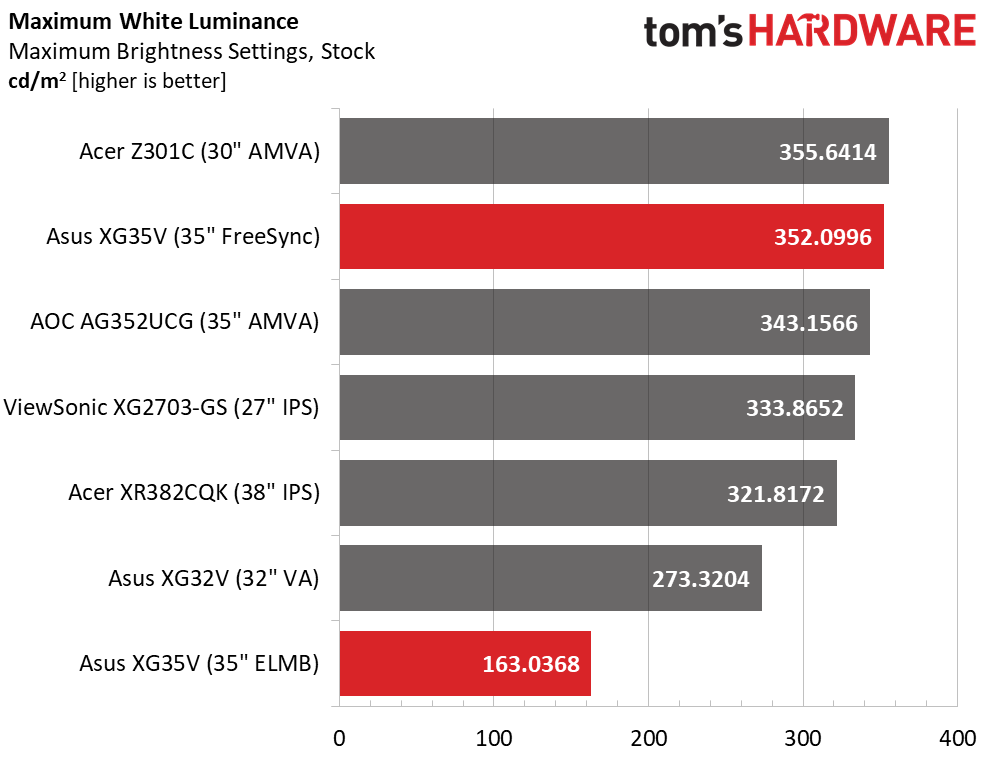
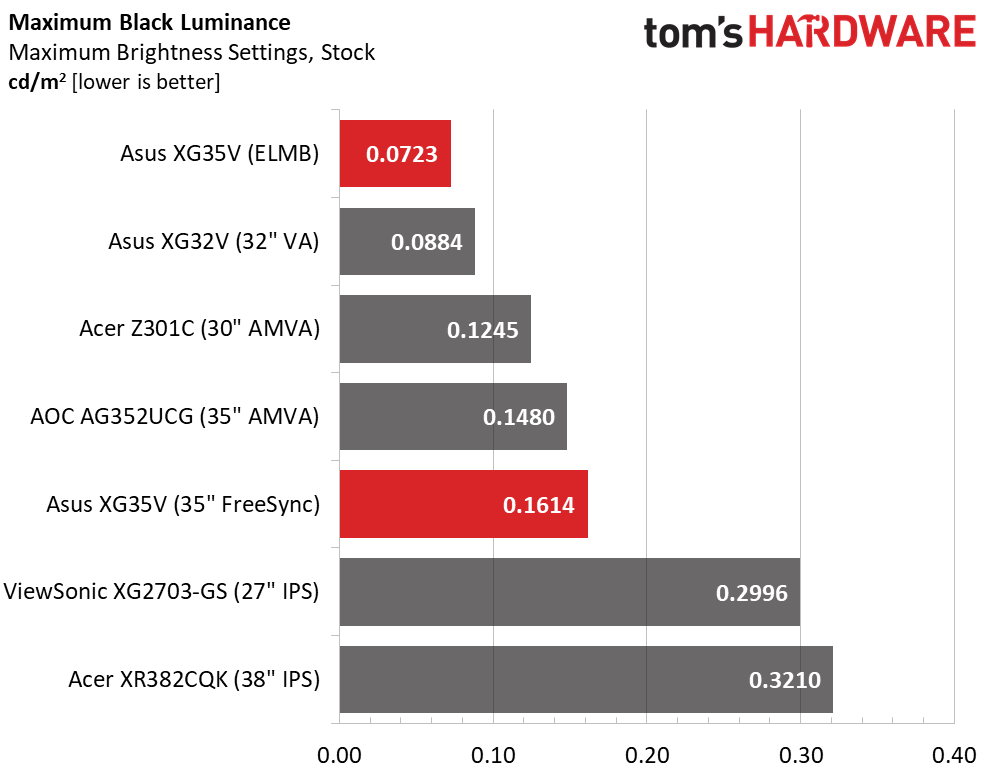
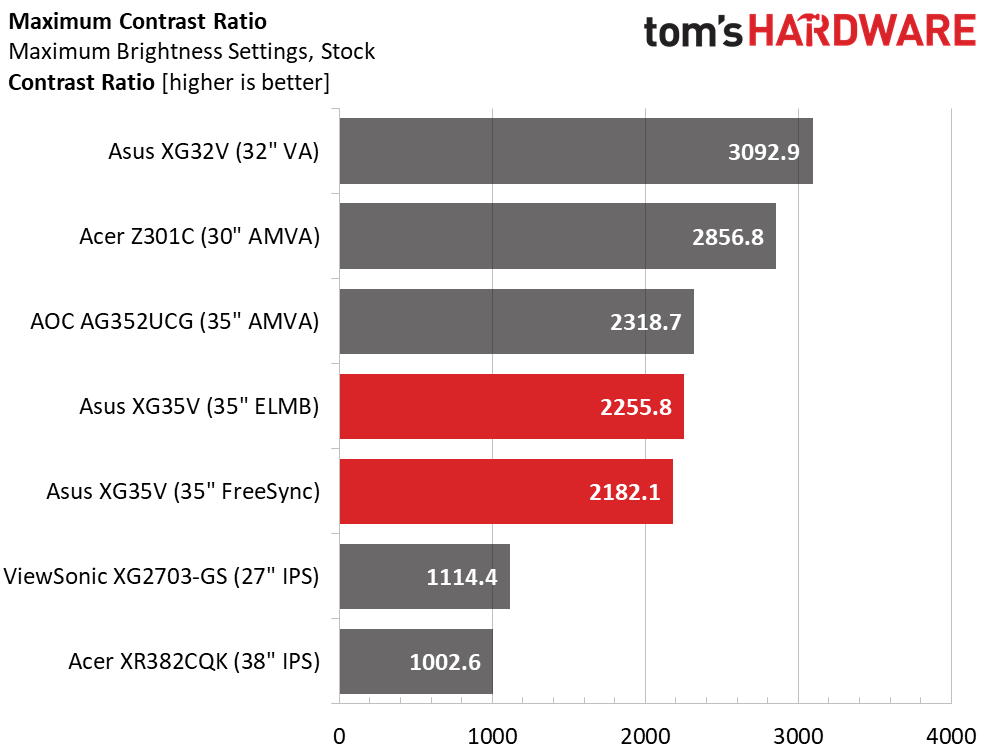
Most ultra-wide monitors don’t deliver a ton of output, but our top two contenders manage to exceed 350 nits. This is the bare minimum for any sort of blur reduction, in our opinion. You’ll need some overhead to compensate for that backlight strobe. The ROG Strix XG35VQ loses 53% brightness when ELMB is engaged. There’s no variable pulse width, though we can see enough reduction in blur that we wouldn’t want to make things any darker. And don’t forget that FreeSync is disabled, as well. The good news is that there’s no contrast penalty, which is a first in our experience. Blur reduction usually reduces image depth, but not in this case. ELMB is very well implemented. Black levels are superb, as we’d expect from any VA panel, and resulting contrast is comfortably over 2000:1.
Uncalibrated – Minimum Backlight Level
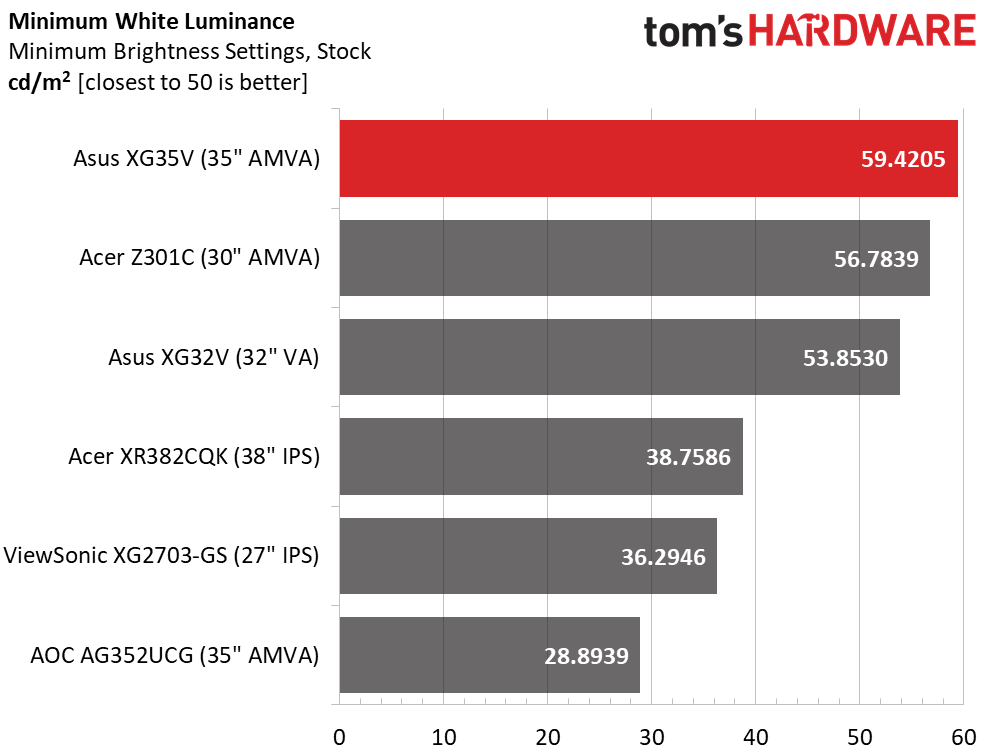
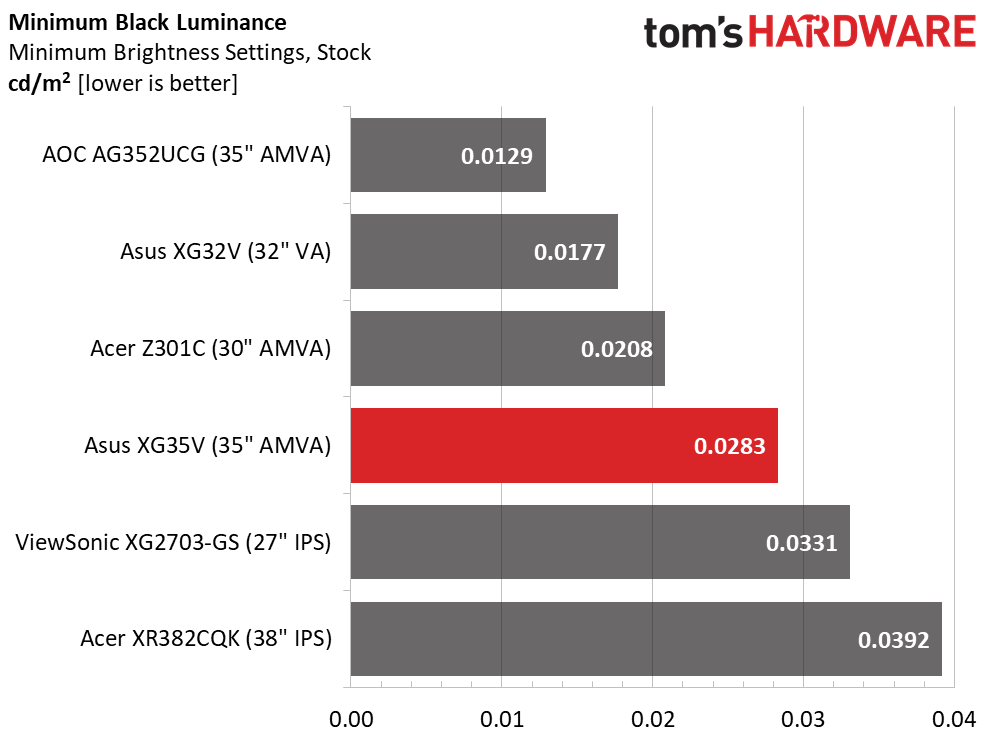
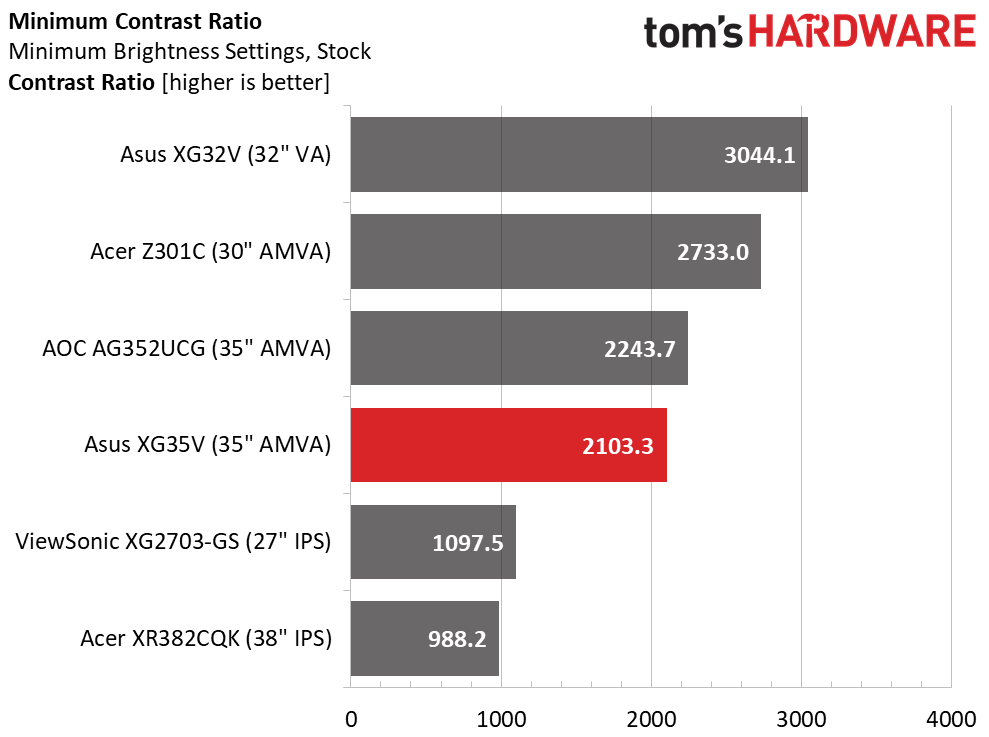
The XG35VQ’s minimum brightness setting is just about perfect for gaming in a dark environment. You’ll definitely want to forgo ELMB at this point, since the image would be quite dark. Black levels drop proportionally, as they should, keeping contrast at around 2100:1. This is consistent performance.
After Calibration to 200cd/m2
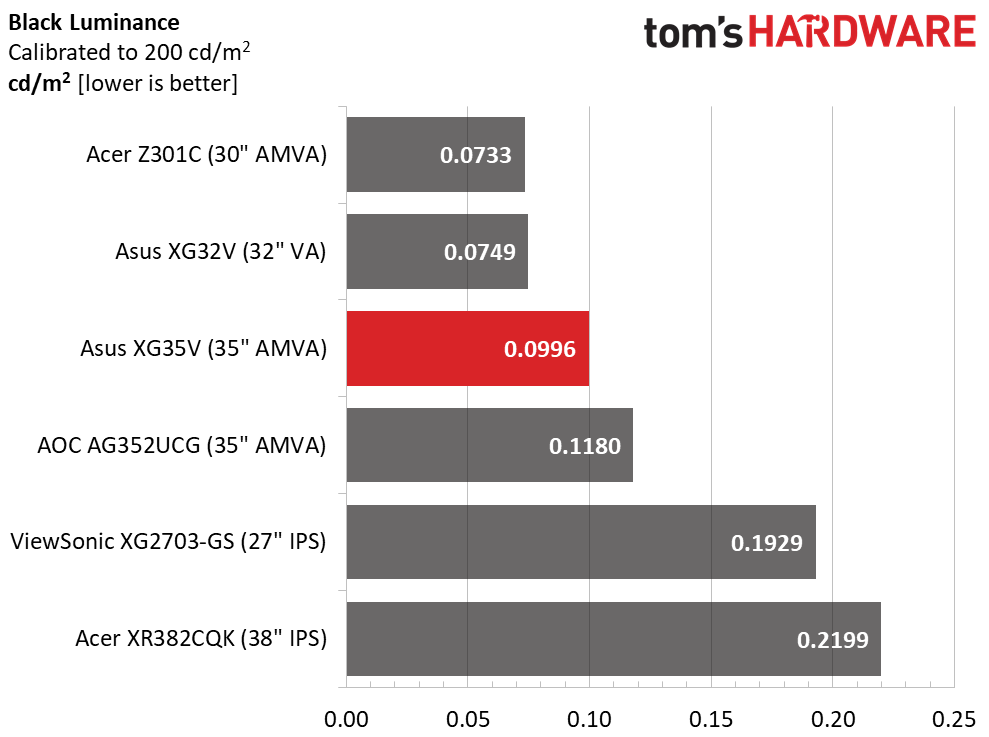
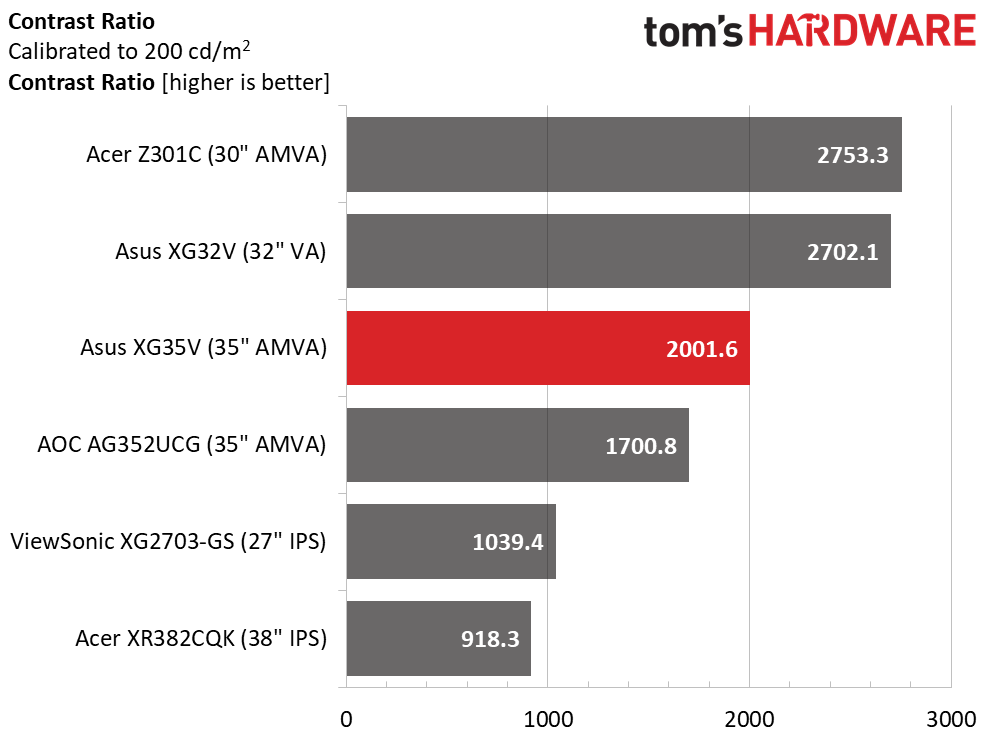
Apparently, not all VA panels are created equal. Though the XG35VQ easily outdistances its IPS competition, its contrast isn’t quite as high as the Z301C and XG32V. The difference is small but visible. You can never have too much dynamic range, after all. We’d still rather game on this screen than nearly any other.
ANSI Contrast Ratio
Intra-image contrast is superb, with the XG35VQ taking second place in the ANSI test. Only Asus’ own XG32V can boast better numbers. When coupled with accurate color, good saturation, and proper gamma tracking, the image here is better than the vast majority of monitors we’ve reviewed, gaming or otherwise. This is a premium-priced display, but it is worth every penny of that cost.
MORE: Best Gaming Monitors
Get Tom's Hardware's best news and in-depth reviews, straight to your inbox.
MORE: Best Professional Monitors
MORE: How We Test Monitors
MORE: How To Choose A Monitor
MORE: All Monitor Content
Current page: Brightness & Contrast
Prev Page OSD Setup & Calibration Next Page Grayscale, Gamma & Color
Christian Eberle is a Contributing Editor for Tom's Hardware US. He's a veteran reviewer of A/V equipment, specializing in monitors. Christian began his obsession with tech when he built his first PC in 1991, a 286 running DOS 3.0 at a blazing 12MHz. In 2006, he undertook training from the Imaging Science Foundation in video calibration and testing and thus started a passion for precise imaging that persists to this day. He is also a professional musician with a degree from the New England Conservatory as a classical bassoonist which he used to good effect as a performer with the West Point Army Band from 1987 to 2013. He enjoys watching movies and listening to high-end audio in his custom-built home theater and can be seen riding trails near his home on a race-ready ICE VTX recumbent trike. Christian enjoys the endless summer in Florida where he lives with his wife and Chihuahua and plays with orchestras around the state.
-
shallots Actually LFC works with any Adaptive Sync panel with more than 2:1 highest to lowest now (initially they said 2.5:1). So this screen supports LFC.Reply
And the Sammy CF791 has a 1500R curve, so this isn't the tightest curve available.
This looks a lot like my ASUS MX34V which I purchased over 12 months ago... Which is also pretty good. -
loki1944 Bit of a late review; this panel has been out for about 4 months now. I bought mine mid-February 2018; fantastic colors. Replaced my Rog Swift (TN); will not ever touch another TN panel and I'm not a fan of over-bright IPS either. This is the best monitor I've ever had out of all my TN/IPS/VA panels.Reply -
Ninjawithagun Unfortunately, it's been proven by sales numbers from multiple manufacturers that the FreeSync monitors have horrible return in revenue. In other words, they just don't sell very well. G-Sync monitors are significantly outselling FreeSync monitors. The plain fact of the matter is G-Sync is more expensive, but works better than FreeSync. The two main superior factors of G-Sync over FreeSync are higher refresh rates and wider range in which the dynamic refresh rate works. The one and only advantage FreeSync has is it is cheaper, but that's it.Reply -
shallots Gsync is only better if you can't understand a spec sheet and need someone to spoon feed you information.Reply
Freesync can basically do everything Gsync can on the top end. It can run on the best HDR panels with the best colours, and the highest and widest range of refresh rates. But Freesync also provides advantages to mid and low end monitors, so it's much more versatile.
And people say Gsync is better when Freesync can do the same and more (for $less), lol. -
zyh1987 can you still call it rog if it’s freesync, or ROG monitor will be strictly fixed refresh rate plus vsync under the whole gpp thing. And Arez Strix for all free sync stuff.Reply -
Valantar This is SO ******* close to being perfect, it kind of pisses me off. The real deal breaker is the huge stand and lack of VESA mount option - that thing will never, ever fit on the raised monitor shelf on my desk, and I won't go back to the hell of neck pain that living without it was. Such a shame, as the size, curvature, panel type, resolution, refresh rate, color accuracy and feature set is entirely spot on, ticking every single box.*Reply
*Except for: an external power brick? Seriously? Asus expects us to pay almost $800 for a monitor and still deal with an unmanageable and annoying lump on the power cord, making the setup messy and impractical no matter the effort? Really? At least I'd expect it to be high enough quality to not fail in an expensive monitor like this, but in general I don't trust external monitor power bricks - using an external generally means the OEM is cheaping out compared to spending a few bucks extra for heat-resistant components required for an internal one, and I expect them to die within ~3 years. -
Co BIY I think the lack of AMD video card availability has to be hurting Freesync monitor sales. Although overpriced nvidia cards are at least for sale.Reply
What are the best cards to drive a monitor like this up to it's potential? -
Kaziel Do these have the same panels as Samsung's curved VA's with all the issues that come with them?Reply -
Valantar Reply20917178 said:It does have a VESA mount I think. It's hidden in the circle on the back.
Hm. The spec sheet does indeed say 100x100 VESA mount, but I've never seen that on these LED projector-equipped monstrosities before. Intriguing.
Review staff: would you mind looking into this? Is there some way to unscrew the upright?

